County’s Fish Passage Plan Seems Fishy
Plan for Kletzsch Park has all the charm and beauty of an industrial conveyor belt.
I attended the County Board committee hearing on December 10 reviewing the proposed changes to the dam on the Milwaukee River and “improved” public access at Kletzsch Park. Much was made of a fish passage and its necessity, among other arguments in favor of the proposed renovation of the dam. But many of the claims about the dam and fish passage had astonishing and stark inconsistencies.
As to the fish passage, we were told that the native populations of fish cannot successfully navigate this dam and that they need to spawn in superior habitat only available upriver.
No one in the room was opposed to opening the river to the featured fish migration, but as desirable as that goal may be, the overall proposal has several questionable assumptions, as follows:
- Milwaukee County proposes that the fish passage be placed along the west bank of the river, along with new pathways, observation platforms and a canoe portage. This represents a massive hardscape installation which will involve tree removal and dieback. Even more destruction of the natural bluff will be caused by construction of a steel retaining wall.
- The fish passage itself will be between the bluff retaining wall and another steel piling, creating an entirely artificial channel for the fish and radically disturbing the river bed. This passage will have all the charm and beauty of an industrial conveyor belt, which the submitted design closely resembles. The effect of the riverbed piling is to almost double the total length of the dam, extending it straight upriver.
- The existing dam, although it is certainly not a natural structure, retains aesthetically harmonious features: the curving dam and the pleasing water flow over its surface. People actually wade out into the river on top of the dam wall and fish from it. This pleasurable access will be blocked to public access by the 24-foot-gap cut into the dam for the artificial and incongruent fish conveyance. As noted the passage will have steel walls which will need regular maintenance. Is that maintenance included in the cost of the structure? Couldn’t a more environmentally congruent solution be designed by a visionary landscape architect?
- The non-profit Milwaukee Riverkeeper justifies the project because of the fish passage while disregarding the inevitable loss of the natural bluff and the significant trees that live there. These are remnants of the oak savanna native tribes and their ancestors maintained for centuries for hunting, gathering, religious celebration and burial. Though only a tiny remnant remains of this sacred gathering place by the river, it remains a treasured and rare point of contact with those first founders of Milwaukee (Mahn-a-waukee Seepe – “gathering place by the river”). The place is sacred, a place like no other in the state or nation. It is strange that an excellent environmental organization is so unconcerned with the landscape the river runs through, and its history and prehistory. Why?
- Milwaukee Riverkeeper acknowledges that the best fish passage solution, and significantly the cheaper option, would be to remove the dam completely; and that the proposed fish passage is a temporary solution and compromise. They have successfully fought and won battles to remove other dams. Why make an exception in this case, and why and how can they justify their stance based on fiscal and time considerations, for what they acknowledge is a temporary solution?
- Milwaukee County staff alleged in the hearing that removal of the dam would allow contaminated sediments to move downstream to previously opened (through removal) dam sites. But another of the expert pro-construction witnesses in the hearing alleged that the sediments behind the dam were within acceptable levels to justify diversion of the river for the proposed repairs to the east side of the dam to be completed. Can both of them be correct and justify the project?
- Milwaukee County staff acknowledge that the hardscape paths and viewing platform will stress the old oak trees, as a result of root destruction. They propose injected hormones, and other treatments. They refused to promise that the trees can be saved, even after expensive treatments.
I am just a layperson, with a life long interest in the natural world, and here is what strikes me about the project:
– It destroys the visual and cultural aesthetics of the place.
– It will remove or threaten oak and hackberry trees older than the State of Wisconsin, older than the country itself. Trees such as these are only ordinary and expendable if you cannot or choose not to see them.
– It is unnecessarily expensive.
– It justifies the expenditure of significant public funds based on artificial time deadlines, gambling on the prospect of funds from other governmental entities.
– It will require future taxpayer funding to maintain and inevitably remove or repair the dam.
– It does not mitigate the present deficiency, the old dam blocking the river, it almost doubles it with a crudely designed dam extension and fish structure.
– It will permanently scar a sacred and culturally important place to satisfy a short term and artificial deadline.
– It will degrade the magnificent Milwaukee County Park System.
– It is ugly.
We need to exhibit some humility here. The river will permanently flow, and will overthrow all temporary and human “improvements.”
The real question about this proposal (and this was not satisfactorily answered in the meeting) is who, and what entities are really served by this abomination?
Renderings
More about the Kletzsch Dam Fish Passage Plan
- Op Ed: County Officials Want to Pave Paradise - Martha Bergland - Dec 18th, 2019
- Op Ed: County’s Fish Passage Plan Seems Fishy - Karl Gartung - Dec 16th, 2019
- Op Ed: Let the Fish Run Free - Milwaukee Riverkeeper - Dec 3rd, 2019
- Op Ed: Save the Kletzsch Park Trees! - Martha Bergland - Apr 19th, 2019
Read more about Kletzsch Dam Fish Passage Plan here
Op-Ed
-
Unlocking Milwaukee’s Potential Through Smart Zoning Reform
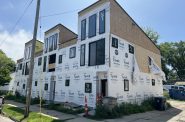 Jul 5th, 2024 by Ariam Kesete
Jul 5th, 2024 by Ariam Kesete
-
We Energies’ Natural Gas Plans Are A Mistake
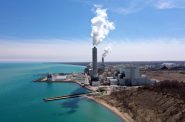 Jun 28th, 2024 by John Imes
Jun 28th, 2024 by John Imes
-
Milwaukee Needs New Kind of School Board
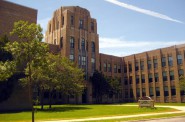 Jun 26th, 2024 by Jordan Morales
Jun 26th, 2024 by Jordan Morales

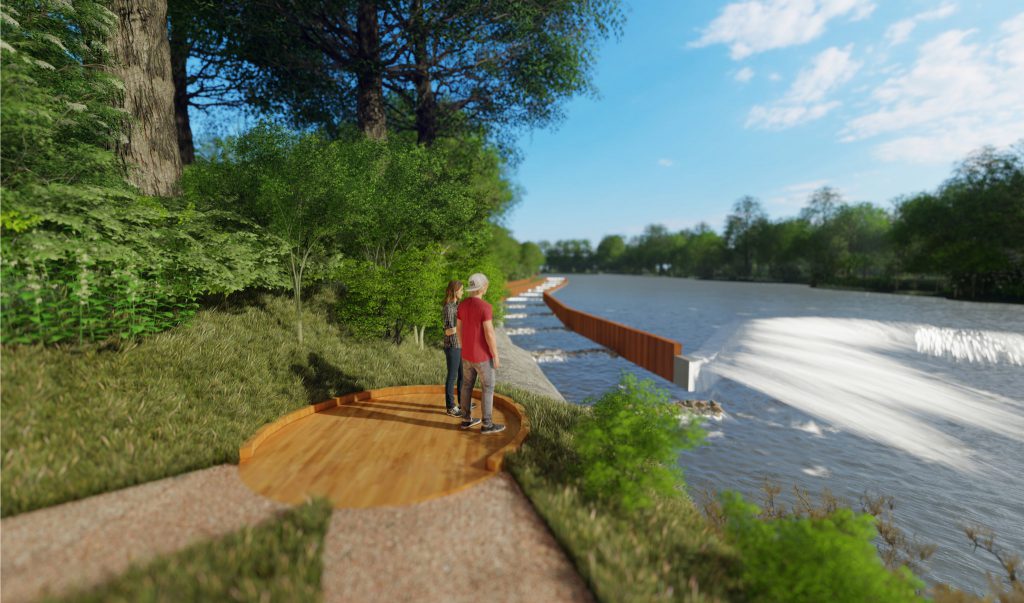
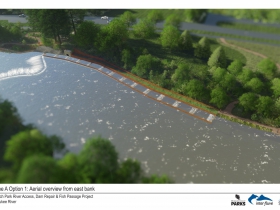
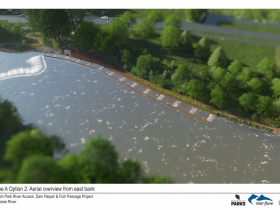
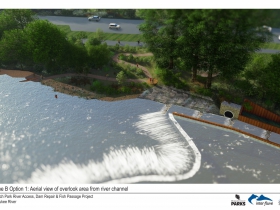
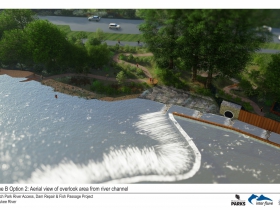
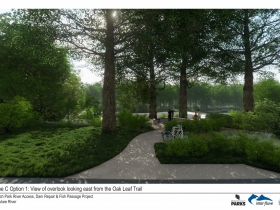
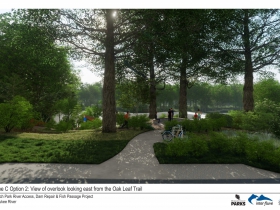

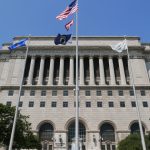
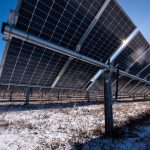
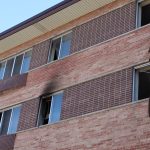
















Karl, I have to admit reading this oped, I was thinking “knee jerk reactionary”. Then I saw the renderings – O.M.G. How could any professional even conceive this design? I’ve already written the park board and Ald Kovac.
Maybe we could line the river with concrete so we don’t have to see all those unsightly plants and things…
D’nardo